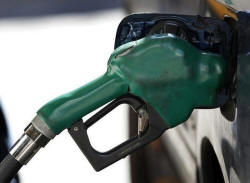|
 Oil
rises as market ponders scale of future Iran exports Oil
rises as market ponders scale of future Iran exports
 Send a link to a friend
Send a link to a friend
[January 04, 2016]
By Amanda Cooper
LONDON (Reuters) - Oil prices edged up on
Monday after a breakdown in diplomatic ties between Saudi Arabia and
Iran that some speculated could result in supply restrictions, although
gains were tempered by data showing some of Asia's largest economies are
struggling.
|
|
 Saudi Arabia, the world's biggest oil exporter, cut diplomatic ties
with Iran on Sunday in response to the storming of its embassy in
Tehran following Riyadh's execution of a prominent Shi'ite cleric on
Saturday. Saudi Arabia, the world's biggest oil exporter, cut diplomatic ties
with Iran on Sunday in response to the storming of its embassy in
Tehran following Riyadh's execution of a prominent Shi'ite cleric on
Saturday.
Fellow Gulf producer Bahrain said on Monday it too would cut ties
with Iran.
Benchmark Brent crude futures were last up 76 cents on the day at
$38.04 a barrel at 1115 GMT, near an intraday high of $38.50.
U.S. West Texas Intermediate (WTI) futures were up 48 cents at
$37.52.
"The two questions the market is grappling with are - where next in
the Saudi Arabia/Iran stand-off? I think President (Hassan) Rouhani
on the Iranian side would like to calm things down and push for no
further escalation," Energy Aspects analyst Richard Mallinson said.
"The second question for the market is is there any uncertainty over
the exact timing and volume of the return of Iranian barrels?" he
said.

The clash between the two Middle Eastern countries comes as Iran,
which holds some of the largest proven reserves, hopes to ramp up
oil exports following the expected removal of sanctions against it.
A series of Iranian officials vowed on Friday to expand Tehran's
missile capabilities, a challenge to the United States which has
threatened to impose new sanctions even as the vast bulk of its
measures against Iran are due to be lifted.
"Itís very confrontational. I donít think thatís enough to derail
(the broader lifting of sanctions), but it is prompting a few more
questions about what would the timing of the return of Iranian
barrels look like," Energy Aspects' Mallinson said.
"The statements at the weekend by (Iranian oil officials) that Iran
would only increase production at the level of the market can absorb
seems to be a shift in rhetoric."
Iran plans to raise output by half a million to 1 million barrels
per day (bpd) post lifting of sanctions, although Iranian officials
said they did not plan to flood the market with its crude if there
was no demand for it.
Iran's oil exports have fallen to around 1 million bpd, down from a
peak pre-sanctions peak of almost 3 million bpd in 2011.
[to top of second column] |

The oil price surrendered earlier gains that boosted futures by as
much as 2 percent after data showed Chinese factory activity shrank
for a 10th straight month, prompting a 7-percent fall on Chinese
stock markets and for trading to be suspended.
Manufacturing activity in India, which the International Energy
Agency believes will lead growth in oil demand this year, contracted
for the first time in two years.
"Iran may decide to take more of a hardline stance against the
Saudi-oriented policy of not cutting production. So far, they've
been going along with it, but this renewed political vigor may
prompt them to change a bit," CMC Markets analyst Jasper Lawler
said.
"Really, this is still a bear market and people are just selling the
bounce because (the clash) is not going to affect production.
Obviously it's just tensions in the region."
Oil prices are still down by two-thirds since mid-2014 on oversupply
as producers including the Organization of the Petroleum Exporting
Countries (OPEC), Russia and the United States pump between 0.5
million and 2 million barrels of oil every day in excess of demand.
(Additional reporting by Henning Gloystein in Singapore; editing by
William Hardy)
[© 2016 Thomson Reuters. All rights
reserved.] Copyright 2016 Reuters. All rights reserved. This material may not be published,
broadcast, rewritten or redistributed.
 |